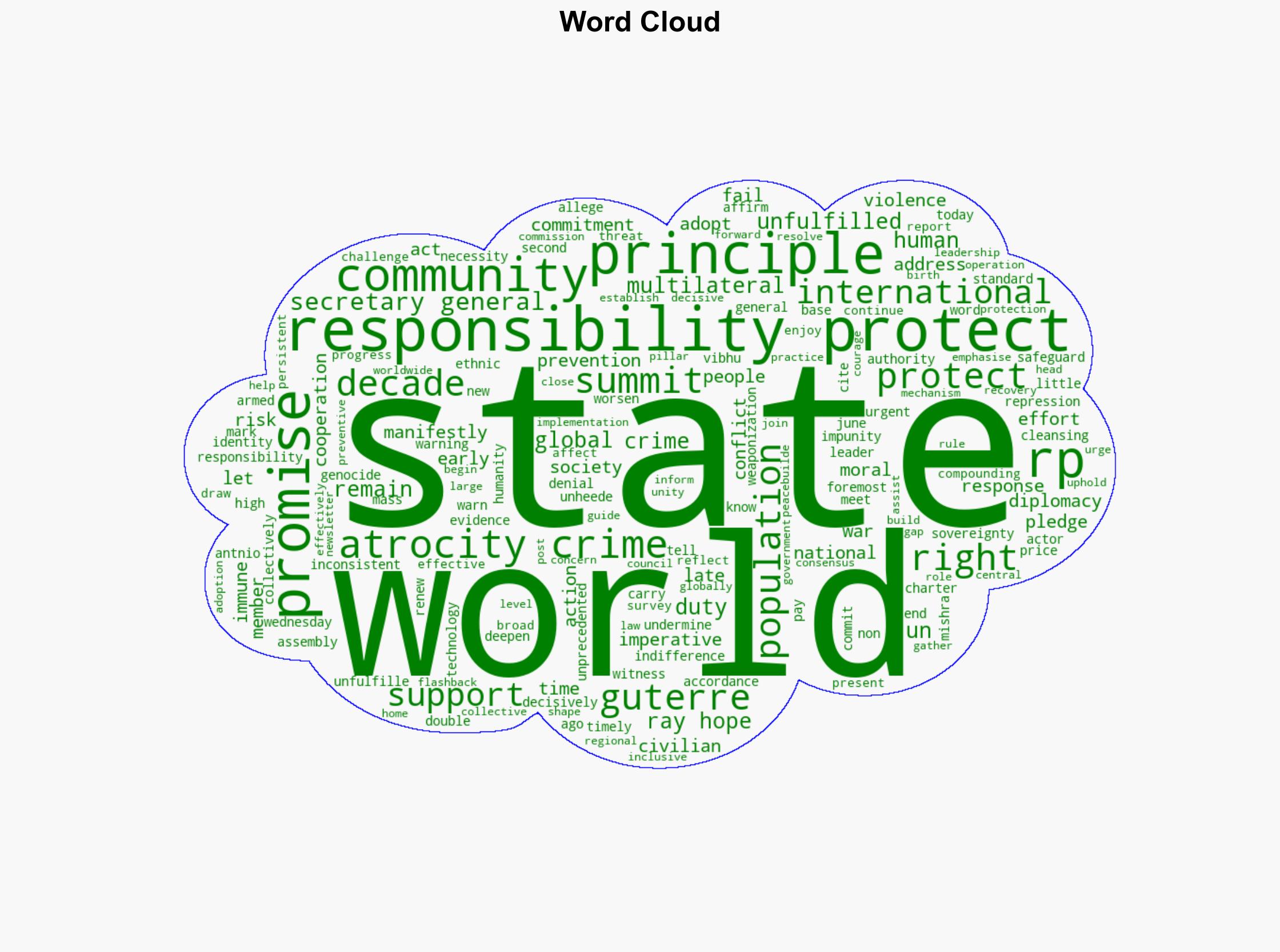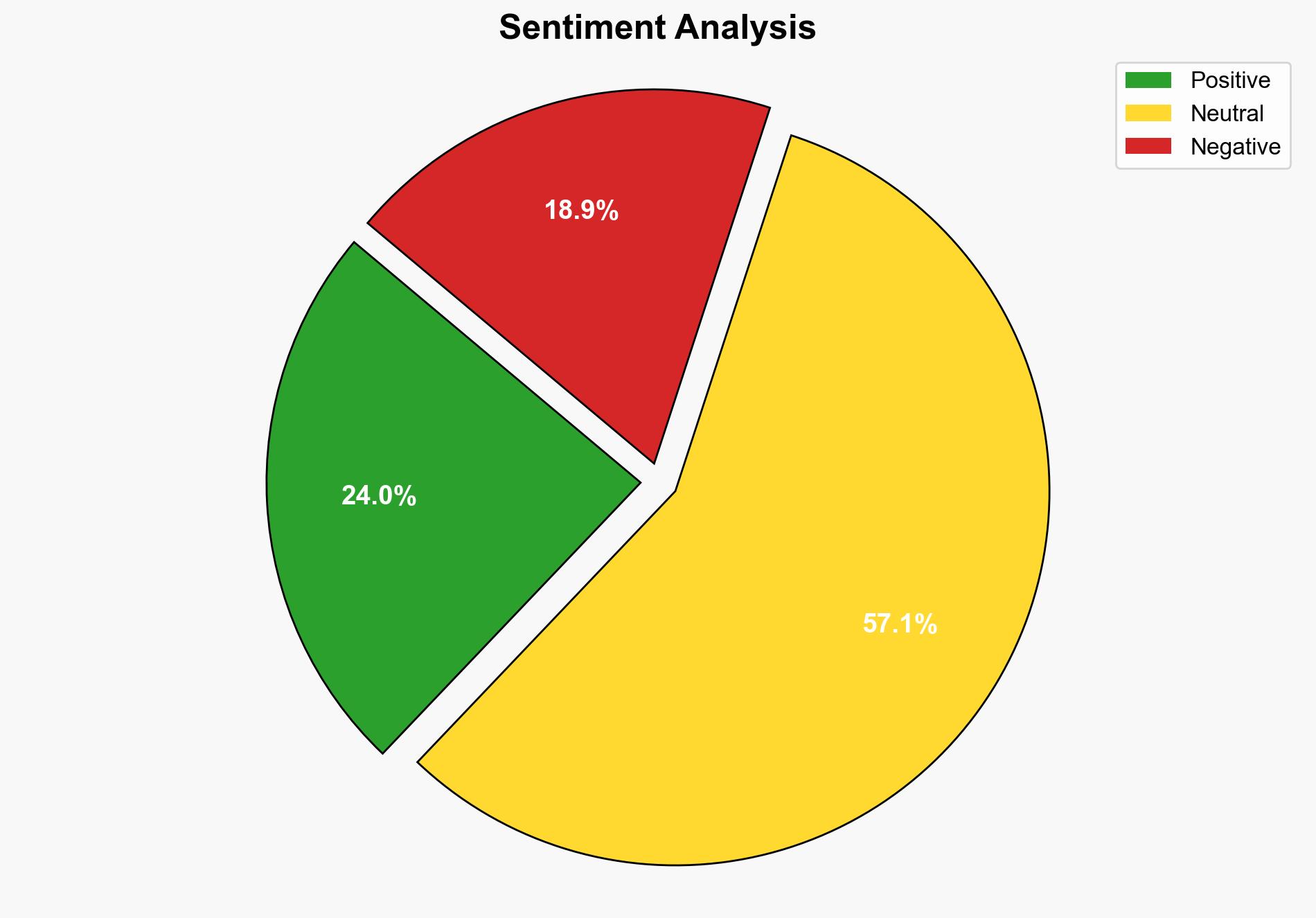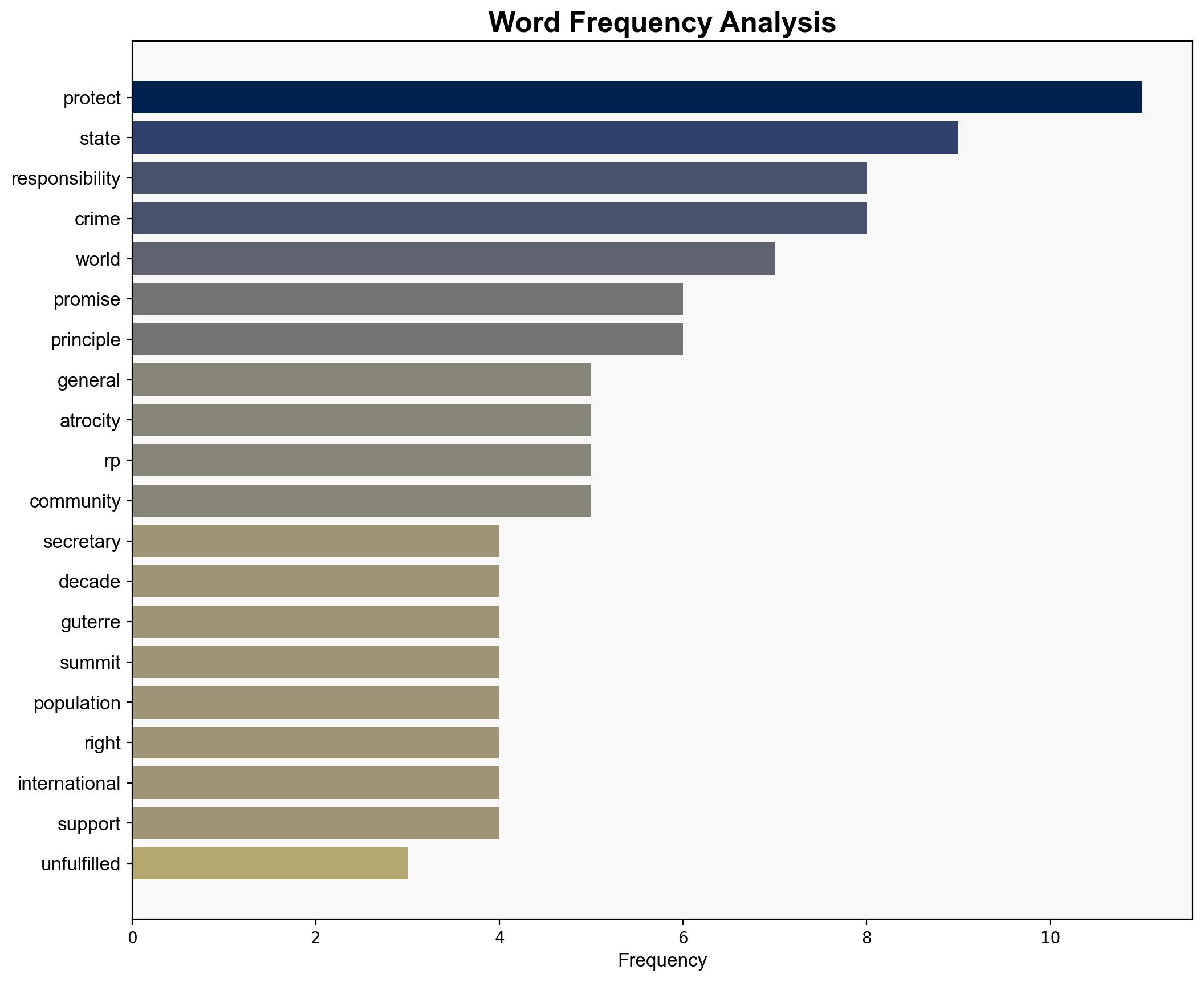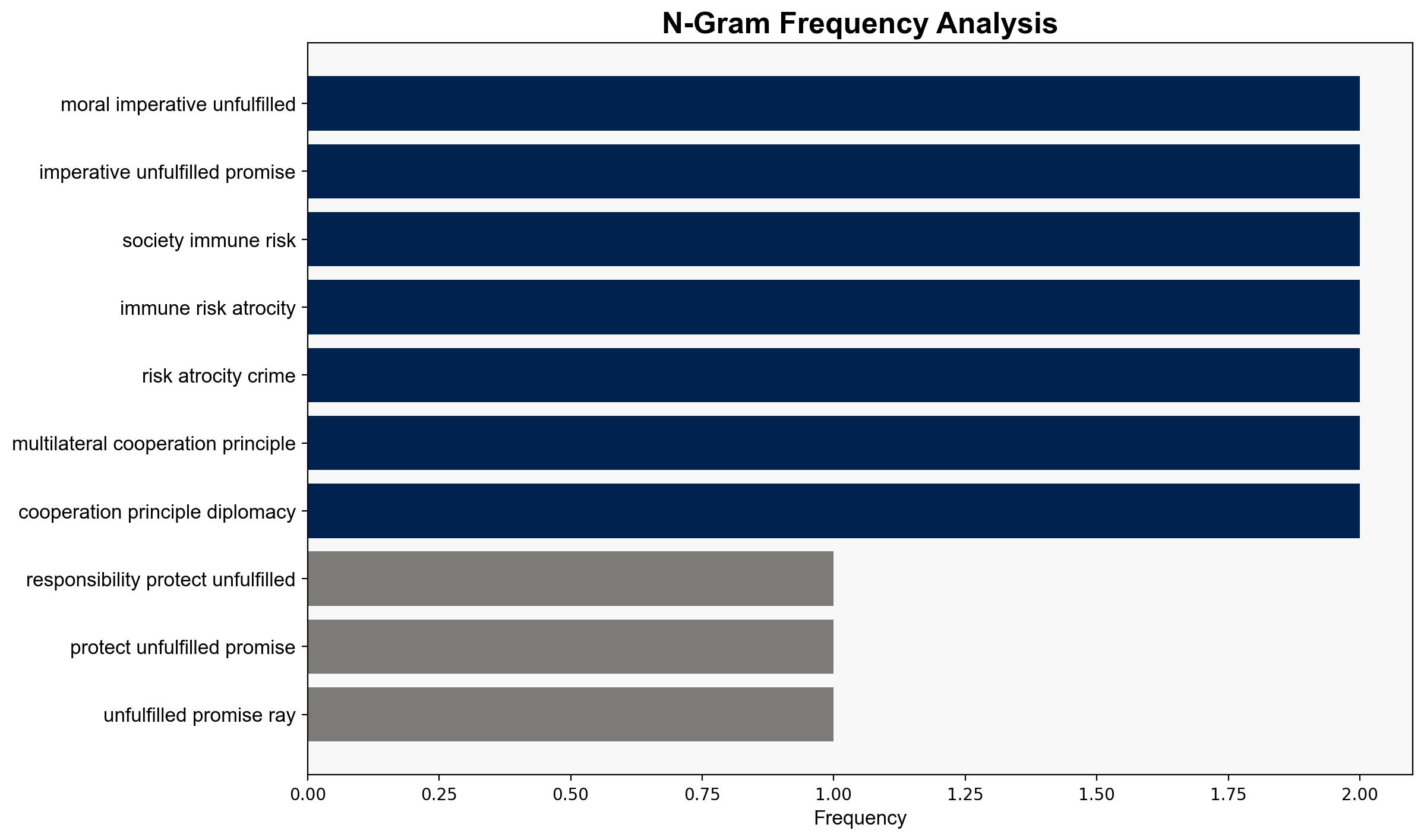Responsibility to Protect An unfulfilled promise a ray of hope – Globalsecurity.org
Published on: 2025-06-26
Intelligence Report: Responsibility to Protect An unfulfilled promise a ray of hope – Globalsecurity.org
1. BLUF (Bottom Line Up Front)
The Responsibility to Protect (R2P) principle, adopted over a decade ago, remains largely unfulfilled, with ongoing global conflicts and atrocities highlighting its urgent necessity. Despite broad support, implementation gaps persist, necessitating renewed international commitment and decisive action to protect civilian populations from mass atrocities.
2. Detailed Analysis
The following structured analytic techniques have been applied to ensure methodological consistency:
Cognitive Bias Stress Test
Potential biases in assessing the effectiveness of R2P have been identified and addressed through structured challenge techniques, ensuring a balanced evaluation of its implementation and impact.
Bayesian Scenario Modeling
Probabilistic forecasting indicates a high likelihood of continued conflict and atrocity risks if current R2P implementation gaps are not addressed. Scenarios suggest varying trajectories based on international response levels.
Network Influence Mapping
Analysis of influence networks among state and non-state actors reveals significant disparities in commitment to R2P, impacting the principle’s effectiveness and highlighting areas for strategic engagement.
3. Implications and Strategic Risks
The persistent failure to fully implement R2P poses significant risks, including increased identity-based violence and impunity. The weaponization of new technologies further compounds these threats, potentially destabilizing regions and undermining global security frameworks.
4. Recommendations and Outlook
- Enhance international cooperation and multilateral efforts to close the gap between R2P principles and practice.
- Strengthen early warning systems and rapid response mechanisms to prevent and address atrocities effectively.
- Scenario Projections:
- Best Case: Global consensus leads to robust R2P implementation, significantly reducing atrocity crimes.
- Worst Case: Continued inaction results in widespread conflict and humanitarian crises.
- Most Likely: Incremental improvements in R2P adherence with ongoing challenges in specific regions.
5. Key Individuals and Entities
António Guterres, Vibhu Mishra
6. Thematic Tags
national security threats, atrocity prevention, multilateral cooperation, global governance





